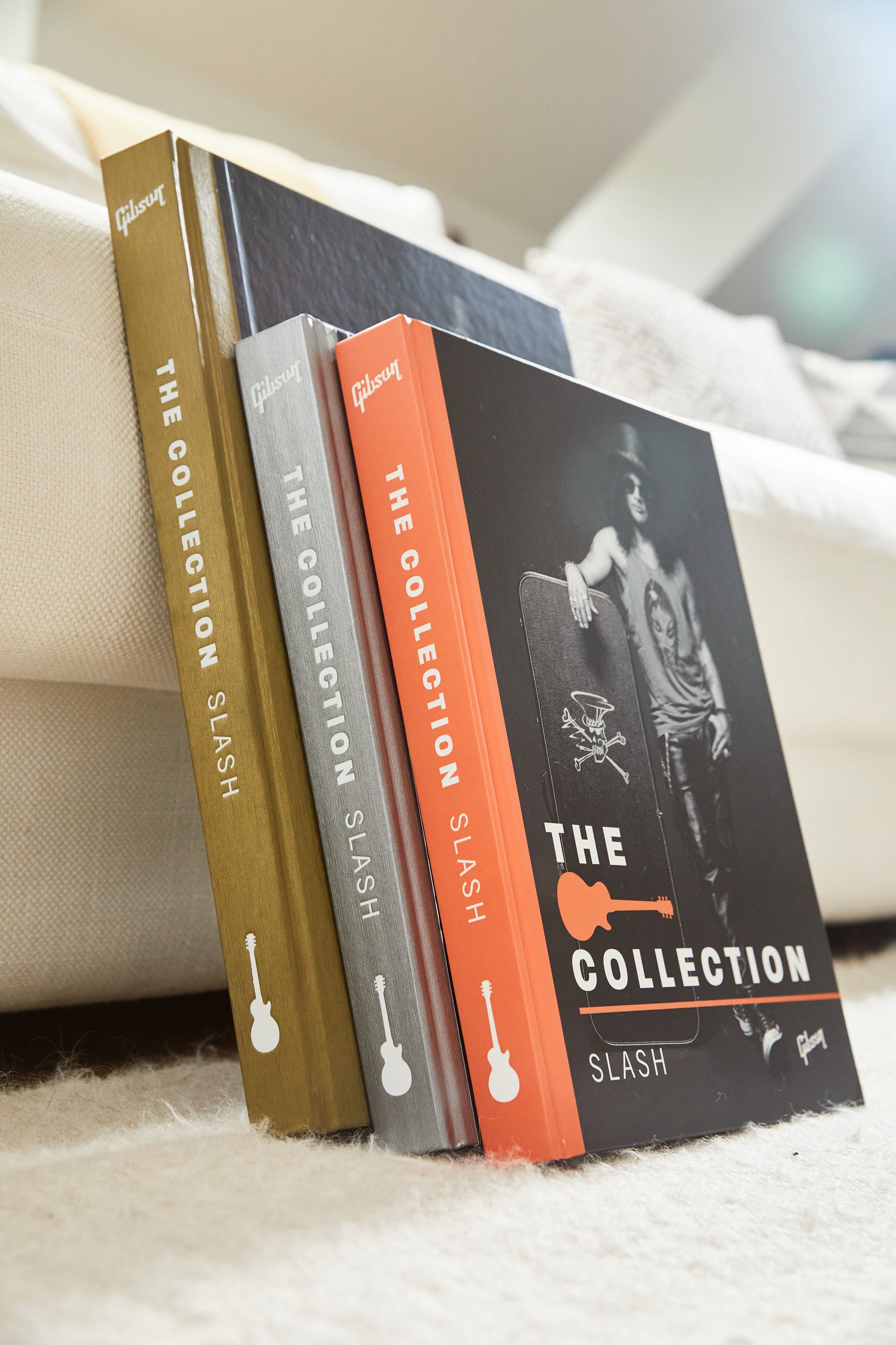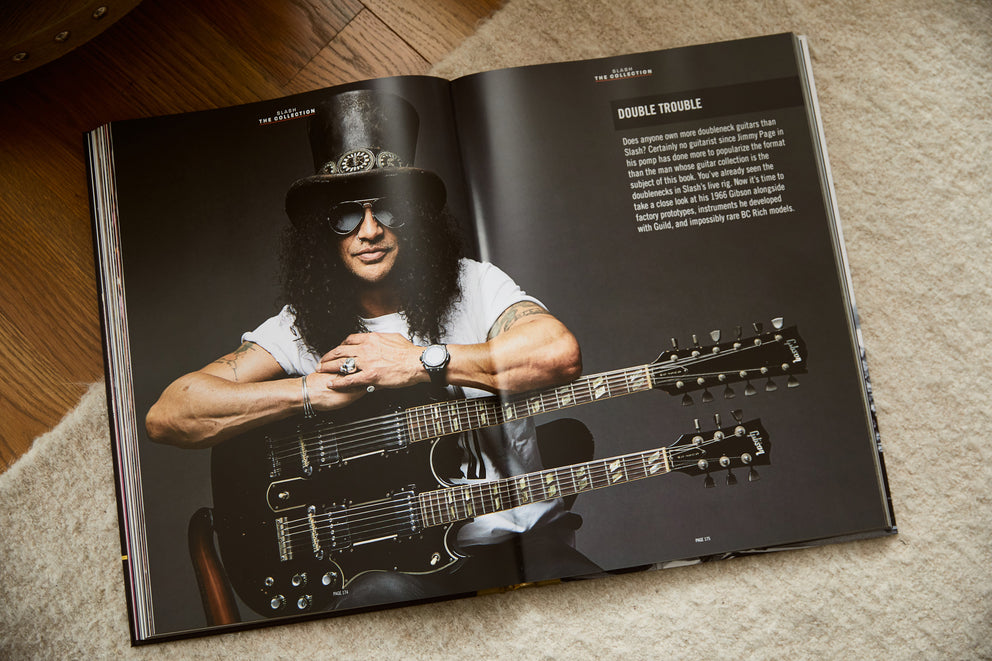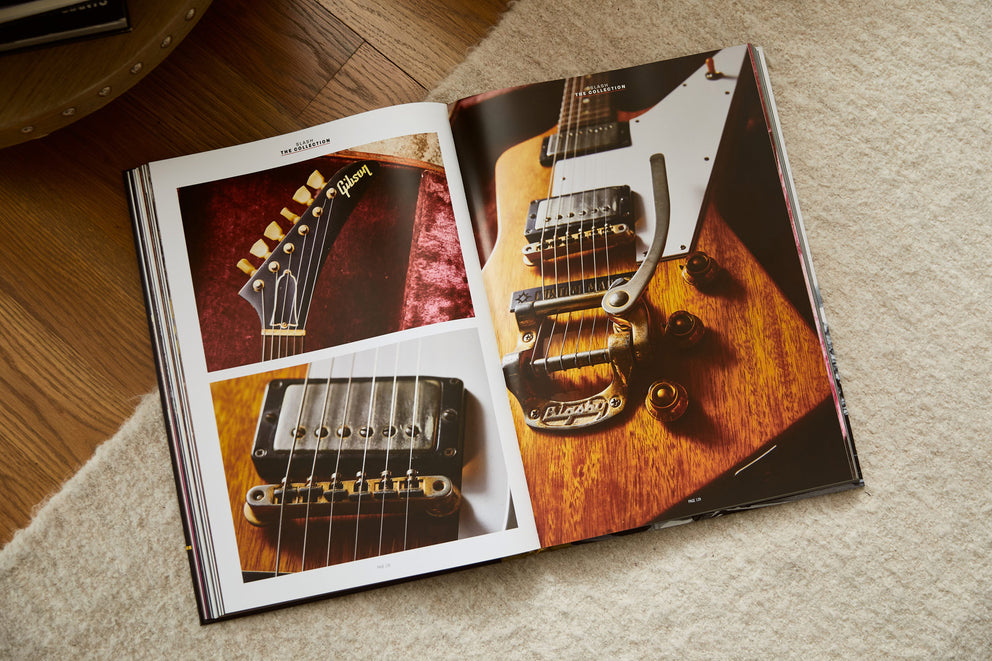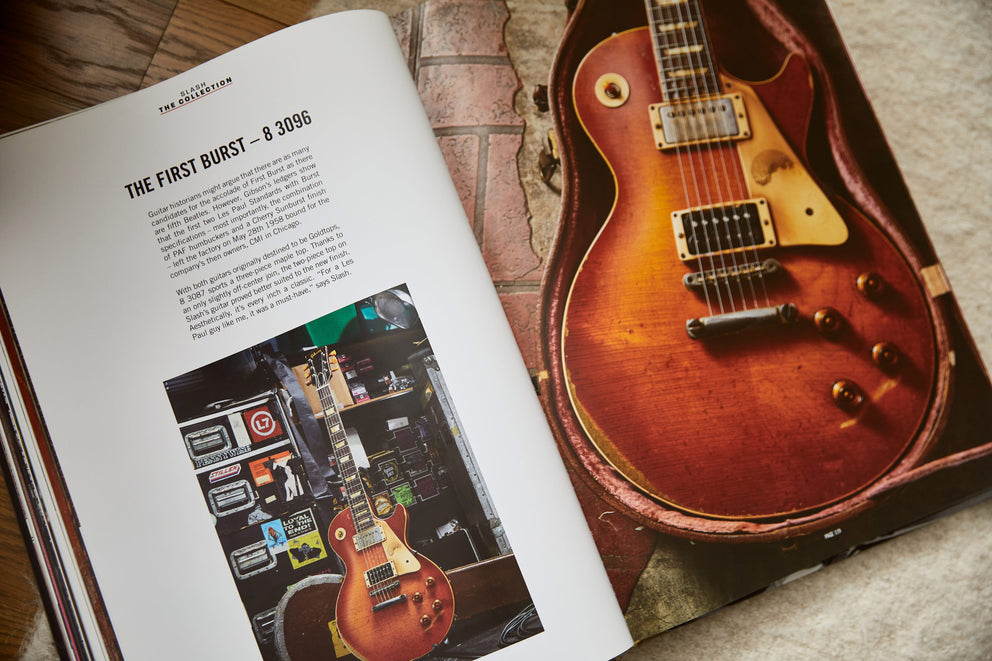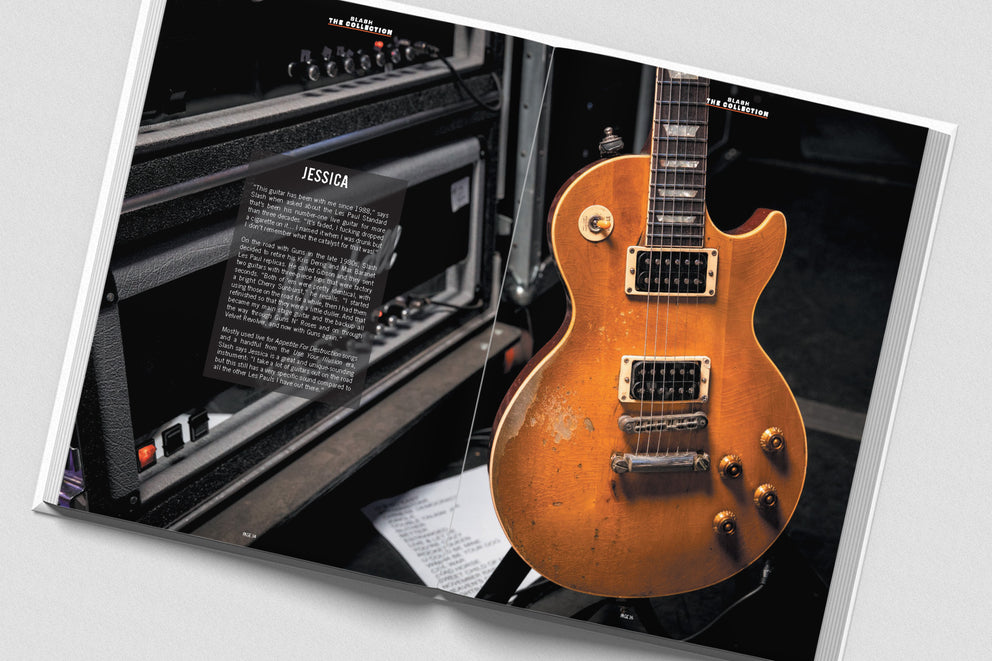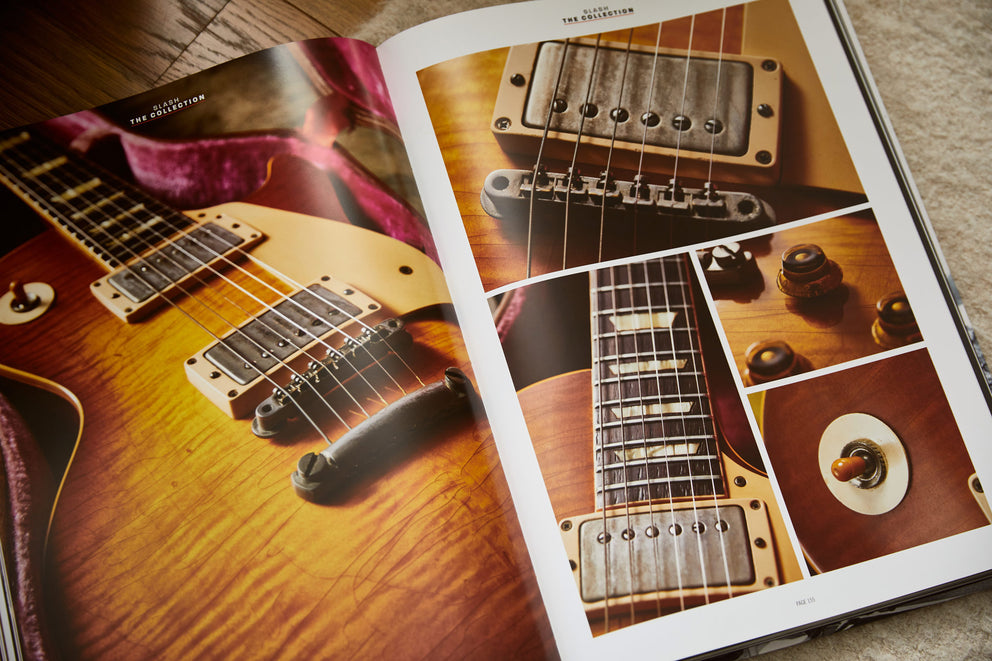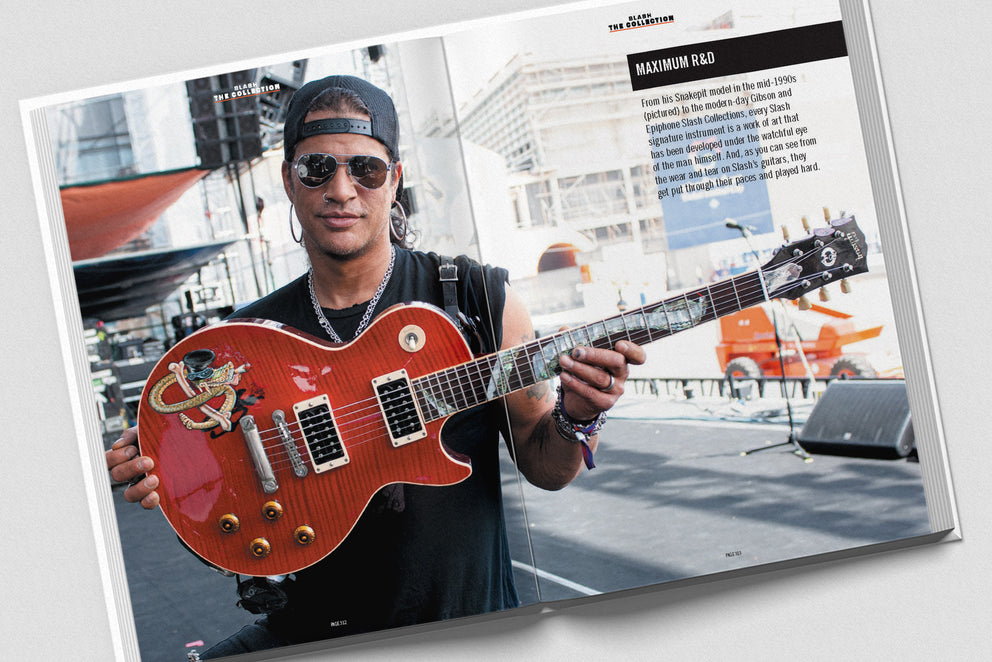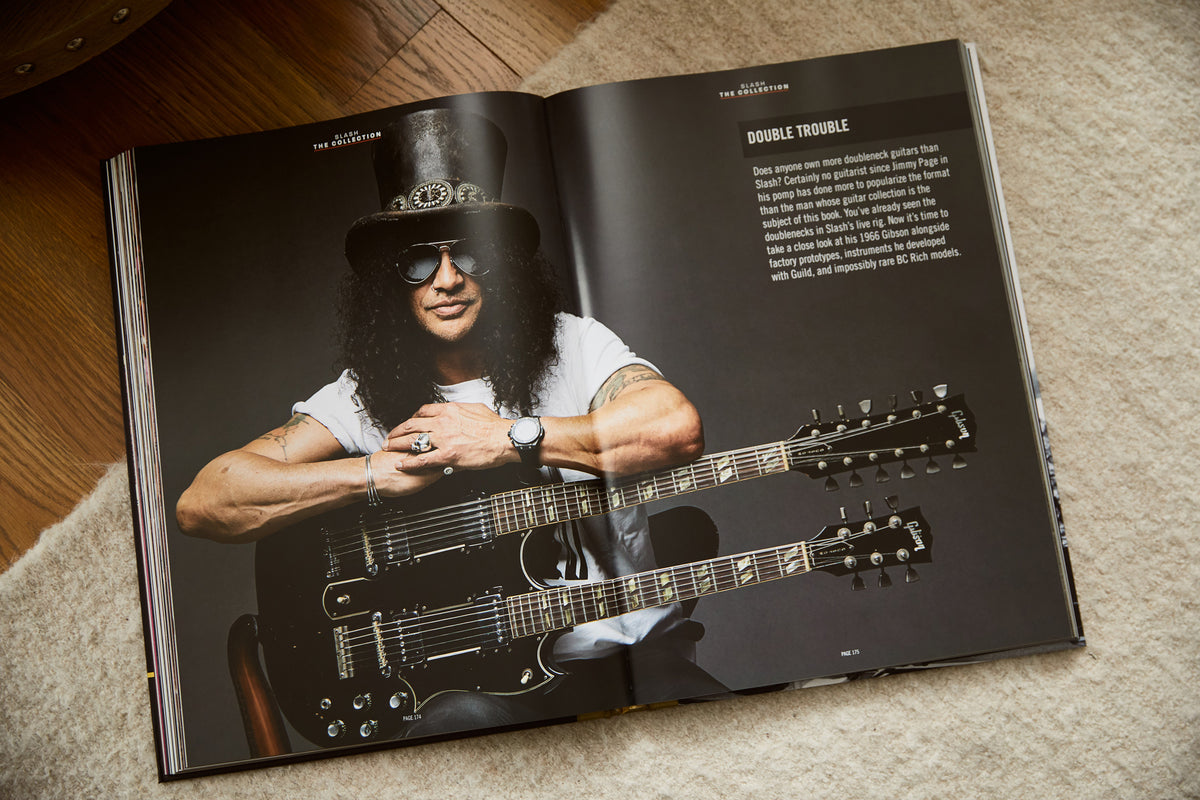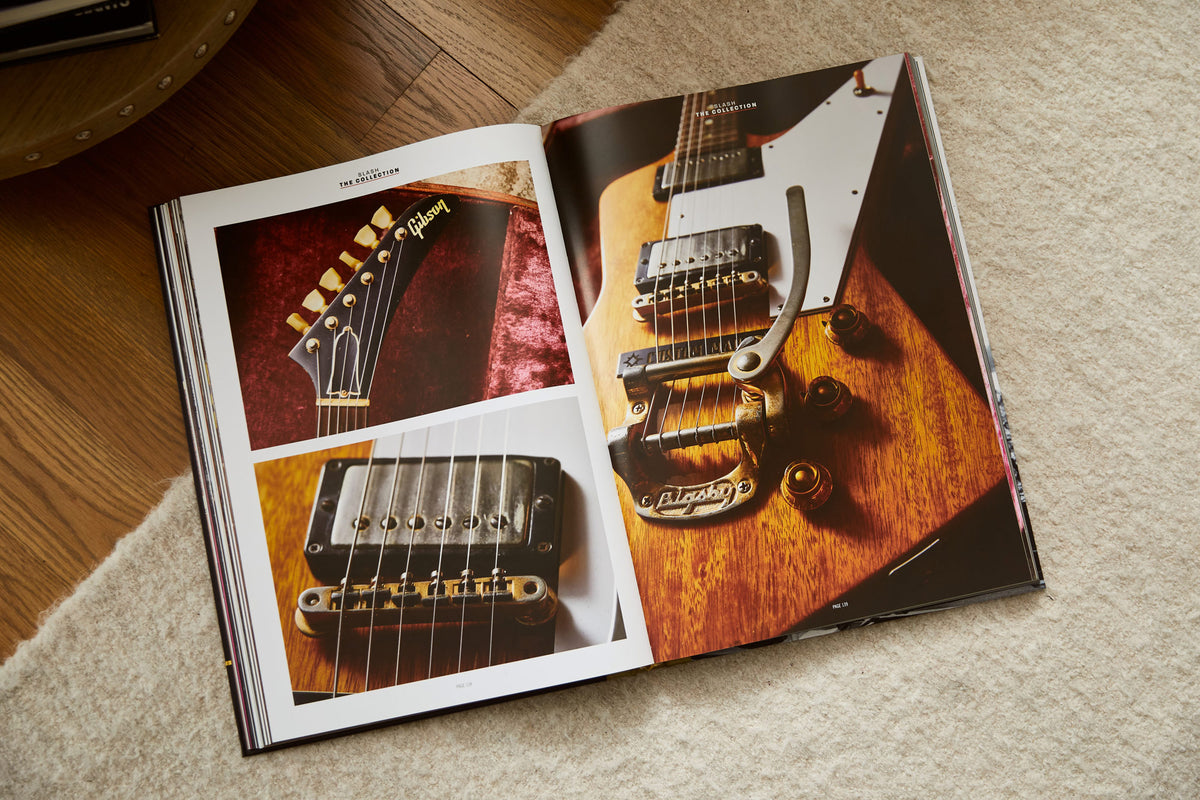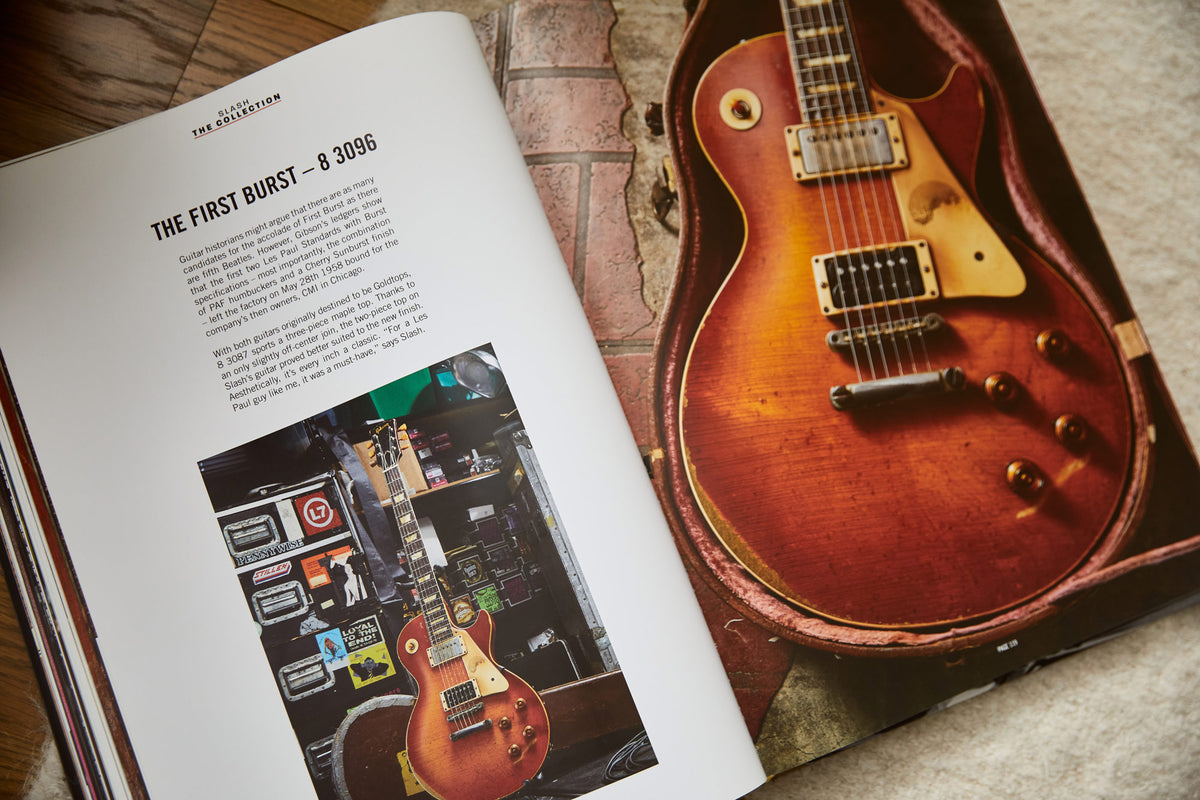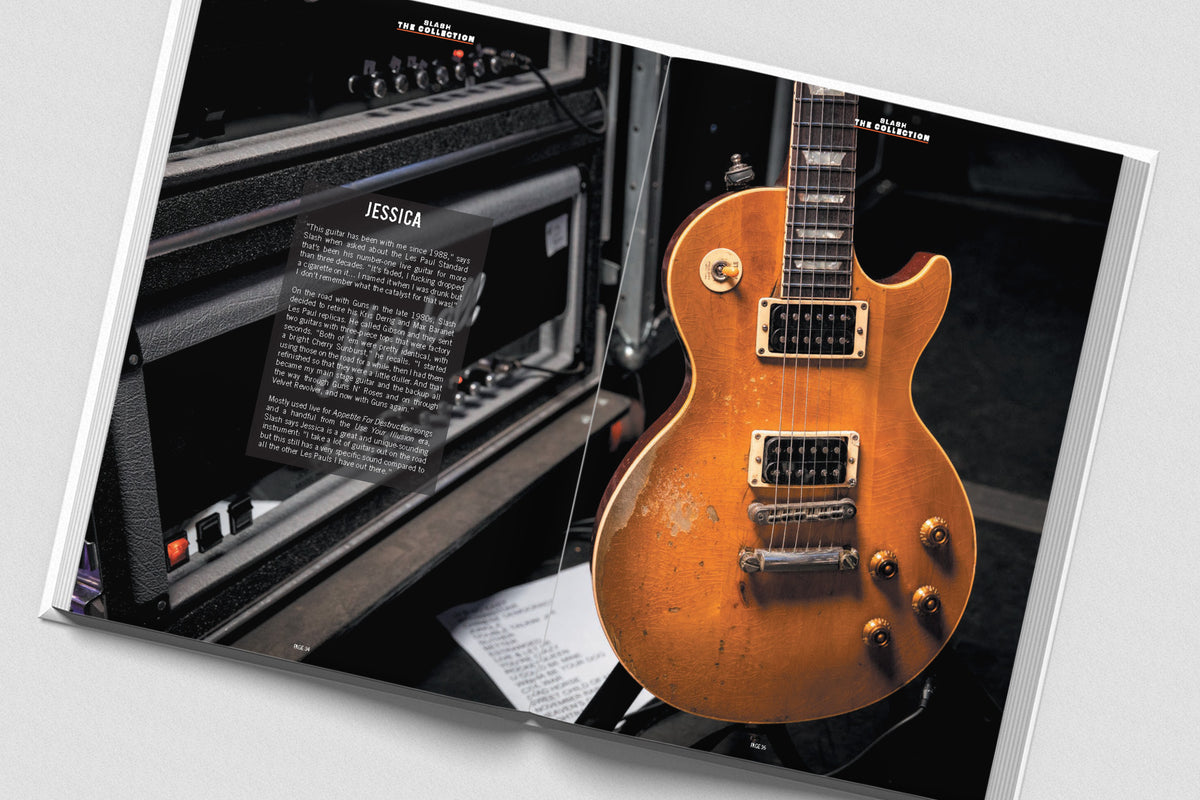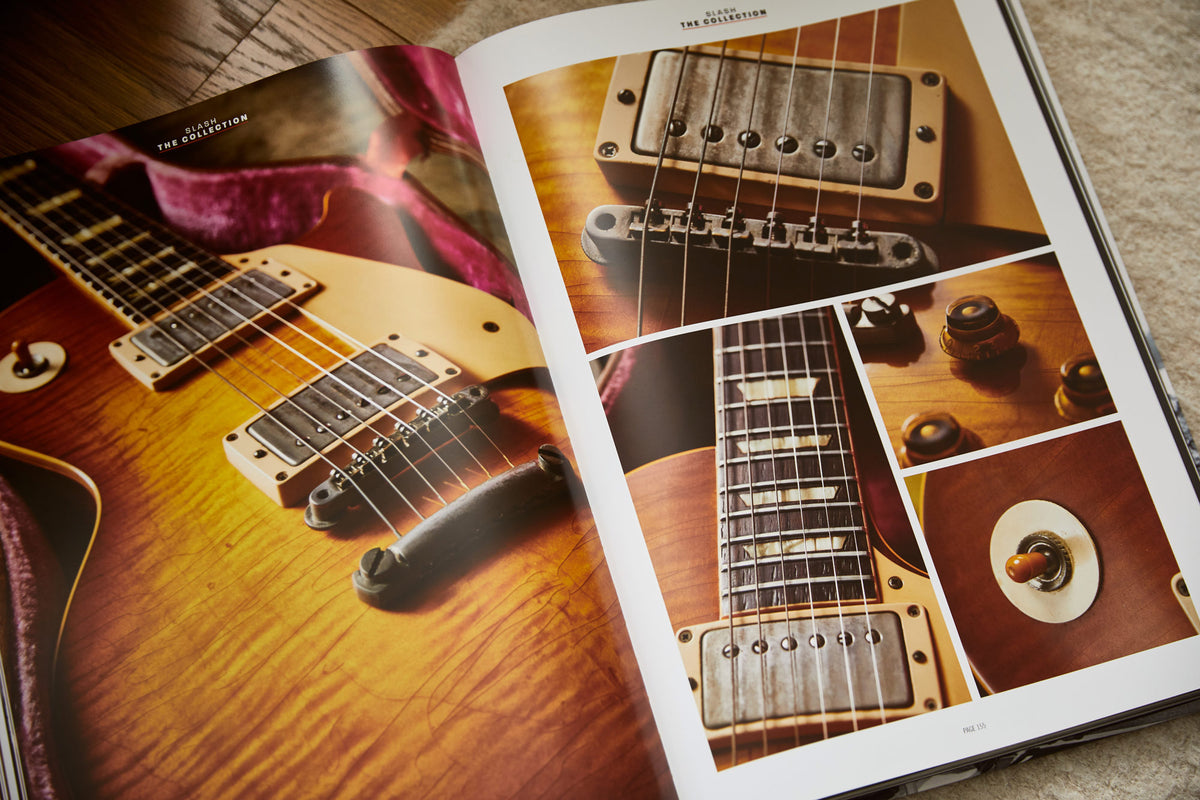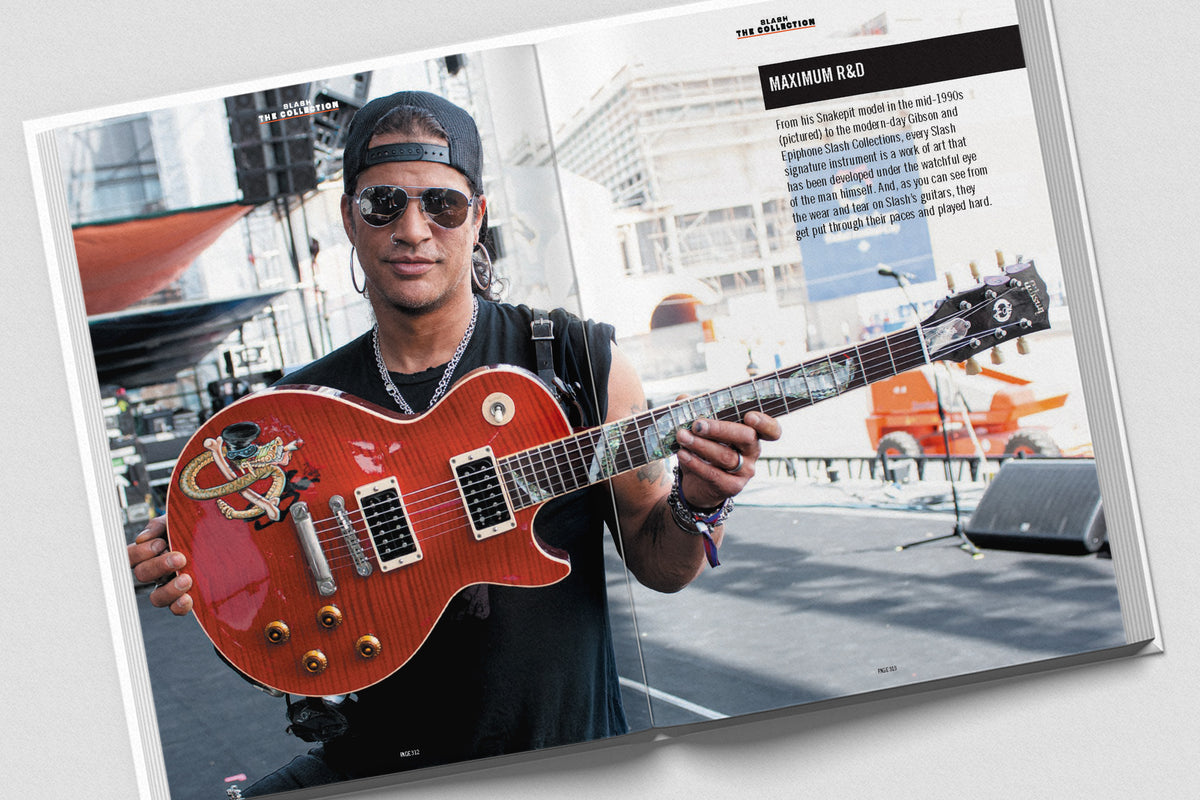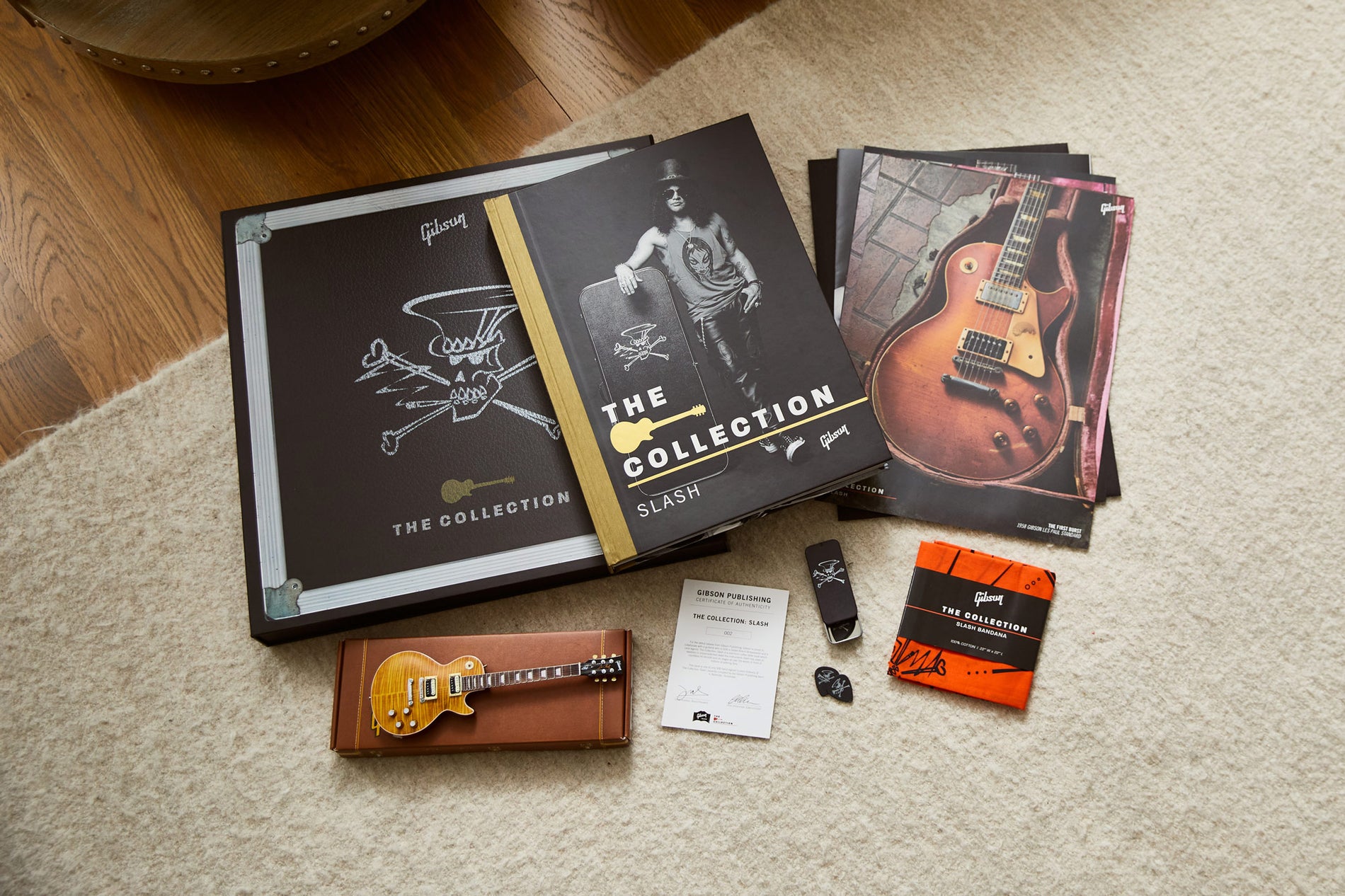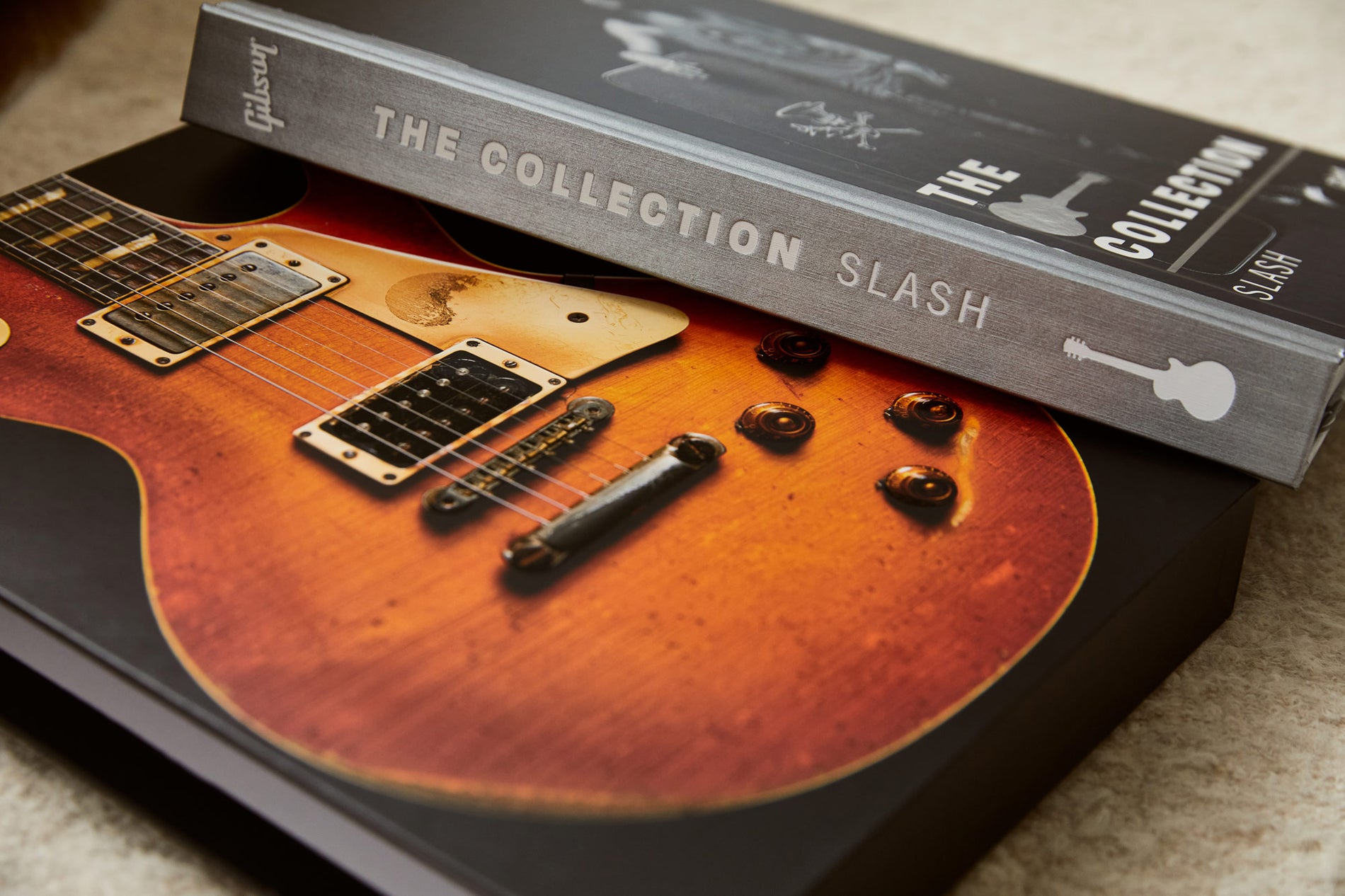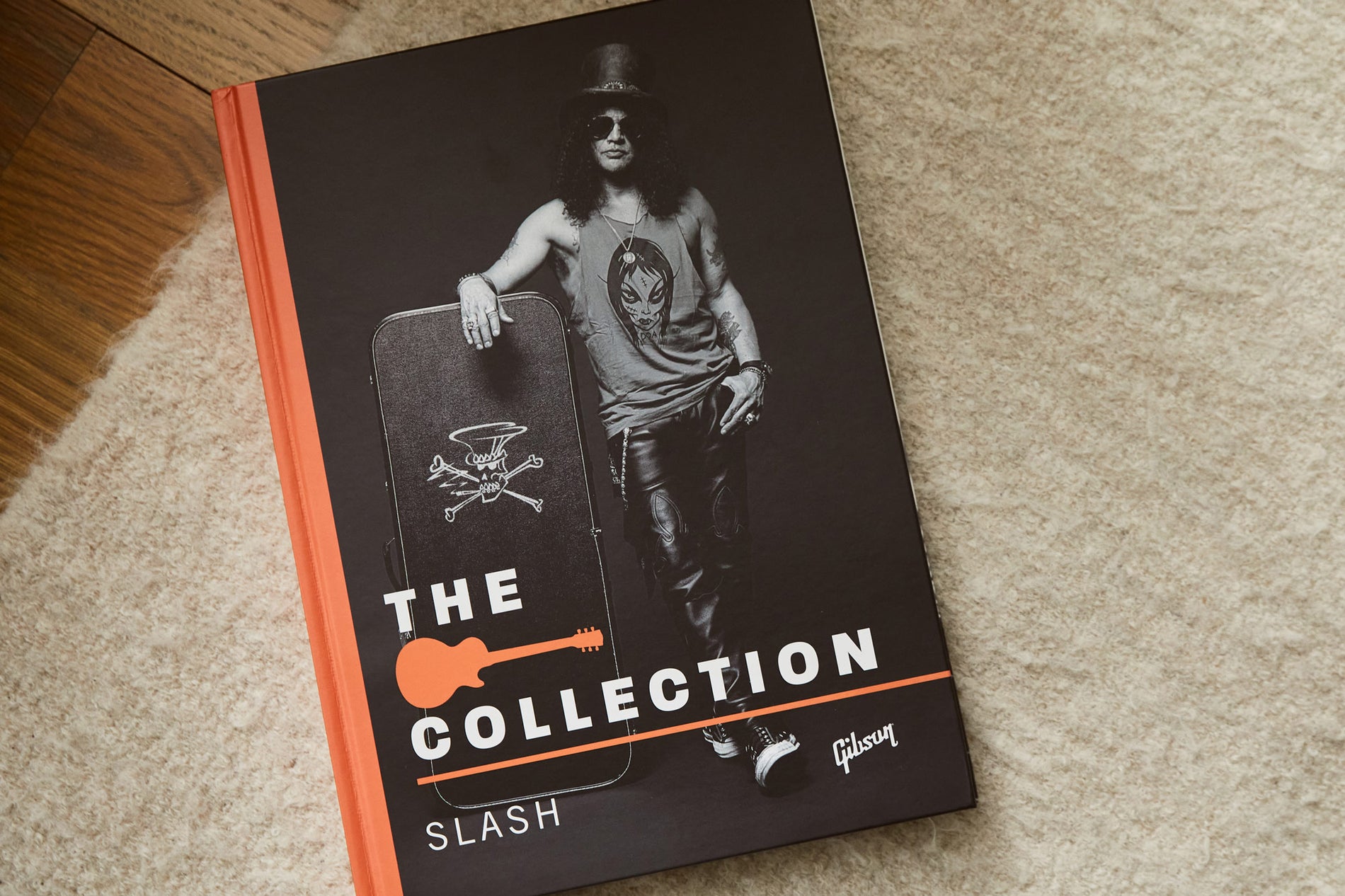Slash 1963 ES-335 collector’s edition
Few artists have had as profound an impact on modern music as Slash. From Guns N’ Roses to Slash’s Snakepit, Velvet Revolver, and four acclaimed albums with Myles Kennedy & The Conspirators, Slash has brought his inimitable style and swagger to each project.
In the process, he has influenced countless guitarists and musicians across generations and genres — and has amassed a staggering collection of about 400 guitars, from holy-grail vintage pieces to prototype Gibson signature models, to guitars made by B.C. Rich®, Guild®, boutique acoustic luthiers, and plenty more besides.
These 364 pages are lavishly illustrated with photos of Slash and his impressive guitar collection, shot by the Gibson team and legendary rock photographer Ross Halfin, whose relationship with Slash extends back to 1986.
Written and edited by Gibson editor-in-chief Chris Vinnicombe, this gorgeous volume offers insights drawn from brand new, exclusive interviews with Slash himself.
